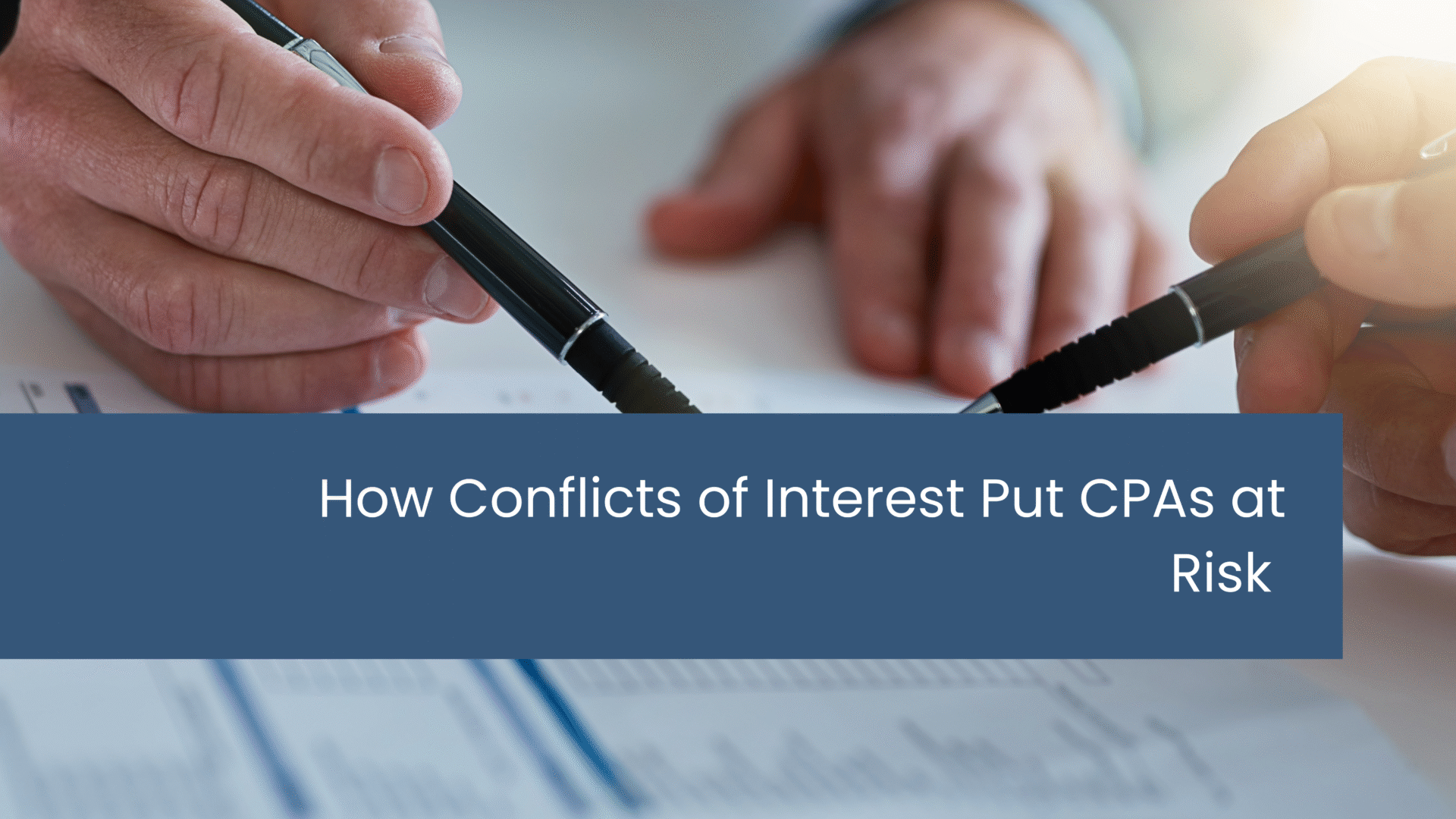How Conflicts of Interest Put CPAs at Risk

One of the top reasons CPAs face professional liability claims is conflict of interest. The threat remains unnoticed until it is too late.
As a business runs smoothly, CPAs are viewed as trusted and loyal advisors to their clients. However, in unfortunate circumstances, such as a financial dispute or an unsuccessful investment, it can take seconds to break that trust. The CPA’s actions are immediately seen in a negative light, leaving clients to question whether they were truly being protected or not.
Common Risky Situations
Cases of conflict of interest usually arise when a CPA is trying to help more than just one party in a transaction or dispute:
- Divorce: If a CPA decides to help both spouses during a civilized split, it’s rather inevitable to get caught in the middle when things turn bitter.
- Business Partnership Disputes: If a CPA decides to stay neutral during a business dispute, he/she may be seen as taking sides
- Joint Investments: Clients are satisfied as their business goes well, but the moment it goes south, CPAs might get blamed for the losses. This is especially when the CPA was also involved in the deal.
Example: When Disclosure Didn’t Protect the CPA
During a business transaction, a CPA firm provided advisory services to both the buyer and the seller. Later, the buyer claimed that the firm had a conflict of interest, favoring the seller’s interests. To be more precise, according to the buyer, the firm had recommended a stock sale structure that benefited the seller, which led to overpayment and unexpected tax liabilities. The CPA firm had already told both sides that there could be a possible conflict. The buyer, however, was adamant that the firm did not stay neutral. In the end, the firm had to make a six-figure payment to the buyer, as per judicial orders.
How to Protect Your Firm
- Take proactive measures to try and spot potential conflicts early and avoid waiting until tensions rise. If there seems to be the slightest possibility for your interests to differ from your client’s, step back and assess.
- Telling a client about a conflict will not suffice. This can lead to miscommunication, and a jury may not believe the client truly understood the risk.
- Try and avoid referrals as your clients will associate your reputation with that person. Instead of pointing towards one provider, offer various qualified options and encourage clients to do their own thorough research.
Final Thoughts
CPAs can often end up in a puddle, as they’re trying to be helpful while juggling complicated relationships. It’s important to remember that the line between trusted advisor and conflicted party can be thin – crossing it can have lasting consequences even if unintended. Stay alert, ethical, and transparent to ace the game.

